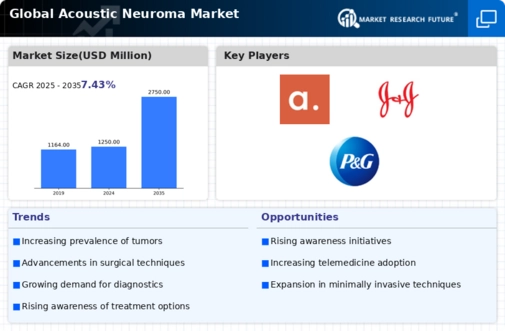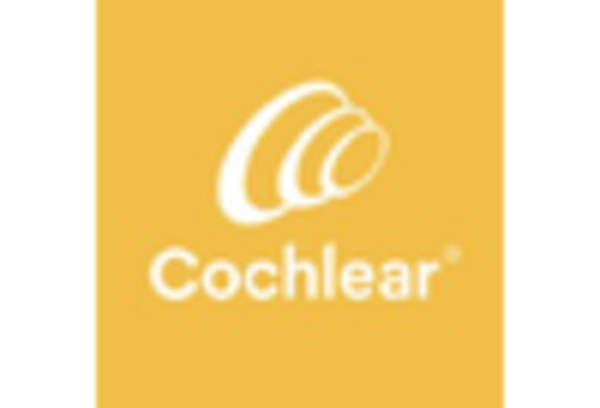Growing Awareness and Education
The rising awareness and education surrounding acoustic neuroma are crucial drivers for the Acoustic Neuroma Market. Increased public knowledge about the symptoms and potential risks associated with this condition has led to more individuals seeking medical advice. Educational campaigns by healthcare organizations and support groups have played a vital role in disseminating information, which in turn encourages early diagnosis and treatment. This heightened awareness is likely to result in a larger patient population requiring specialized care, thereby stimulating growth within the Acoustic Neuroma Market as healthcare providers adapt to meet the needs of these patients.
Development of Targeted Therapies
The emergence of targeted therapies represents a significant advancement in the Acoustic Neuroma Market. These therapies aim to specifically address the molecular mechanisms underlying acoustic neuroma, offering more effective treatment options with potentially fewer side effects. Research into genetic and molecular profiles of tumors is paving the way for personalized medicine approaches, which are gaining traction in oncology. As these targeted therapies become more widely available, they are expected to enhance treatment outcomes for patients with acoustic neuroma, thereby driving growth in the Acoustic Neuroma Market as healthcare systems adapt to incorporate these innovative solutions.
Advancements in Imaging Technologies
Technological innovations in imaging techniques are significantly influencing the Acoustic Neuroma Market. Enhanced modalities such as MRI and CT scans have improved the accuracy of acoustic neuroma diagnoses, allowing for earlier detection and intervention. The market for imaging technologies is projected to grow, with investments in research and development leading to more sophisticated tools. These advancements not only facilitate better patient outcomes but also increase the overall demand for acoustic neuroma treatments. As imaging technologies continue to evolve, the Acoustic Neuroma Market is expected to benefit from the integration of these innovations into clinical practice.
Rising Incidence of Acoustic Neuroma
The increasing incidence of acoustic neuroma is a primary driver for the Acoustic Neuroma Market. Recent data indicates that the prevalence of this benign tumor is on the rise, with estimates suggesting that approximately 1 in 100,000 individuals are diagnosed annually. This growing number of cases necessitates enhanced diagnostic and treatment options, thereby propelling market growth. As awareness of acoustic neuroma increases, more patients seek medical attention, leading to a higher demand for specialized healthcare services. The Acoustic Neuroma Market is likely to expand as healthcare providers invest in advanced imaging technologies and treatment modalities to address this rising incidence.
Increasing Investment in Healthcare Infrastructure
The growing investment in healthcare infrastructure is a notable driver for the Acoustic Neuroma Market. Governments and private entities are allocating substantial resources to enhance healthcare facilities, particularly in neurology and oncology departments. This investment is likely to improve access to specialized care for patients with acoustic neuroma, facilitating timely diagnosis and treatment. Enhanced infrastructure also supports the integration of advanced technologies and skilled professionals into the healthcare system. As healthcare systems evolve, the Acoustic Neuroma Market is poised to benefit from these improvements, ultimately leading to better patient outcomes and increased market demand.

















Leave a Comment